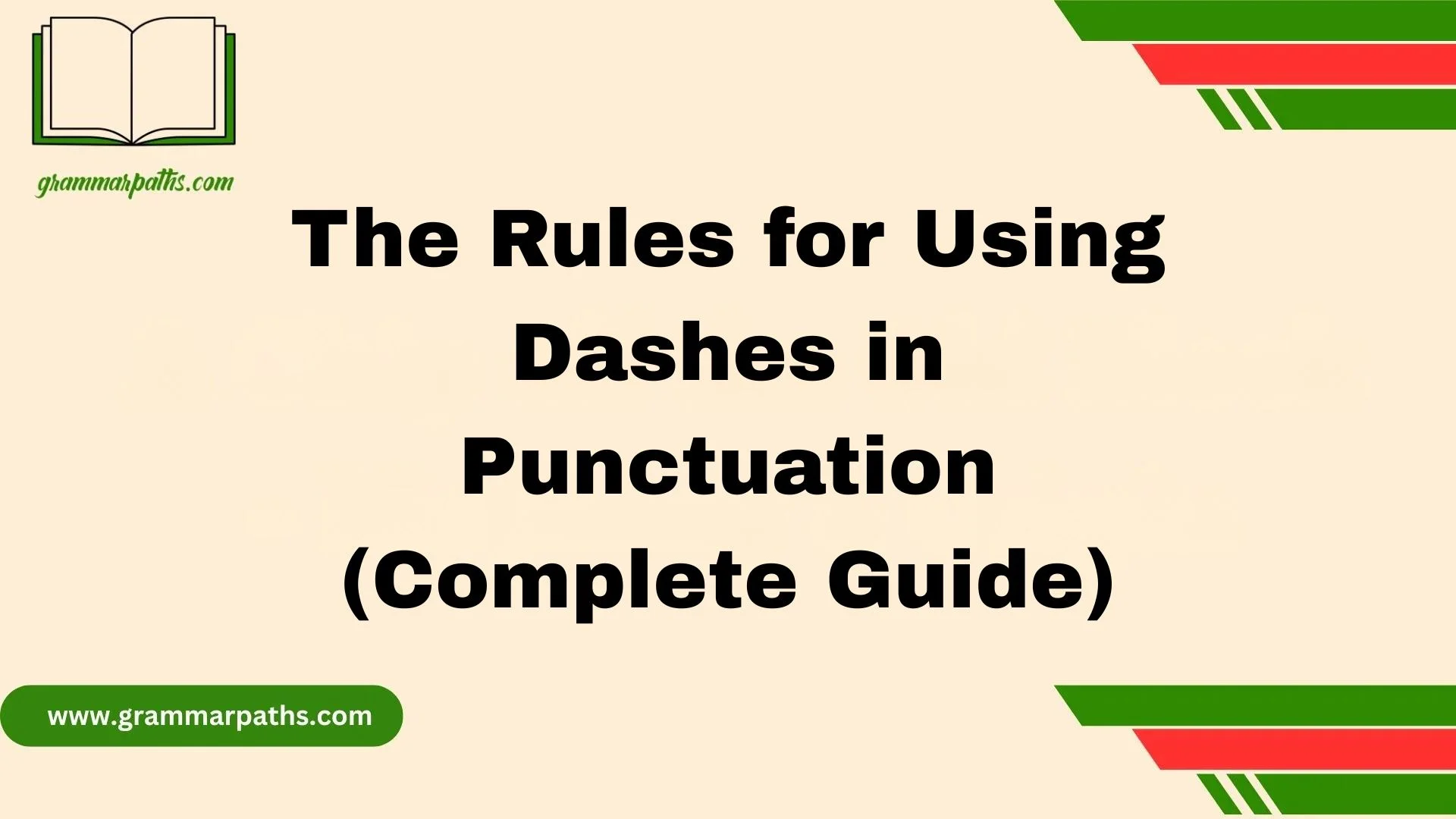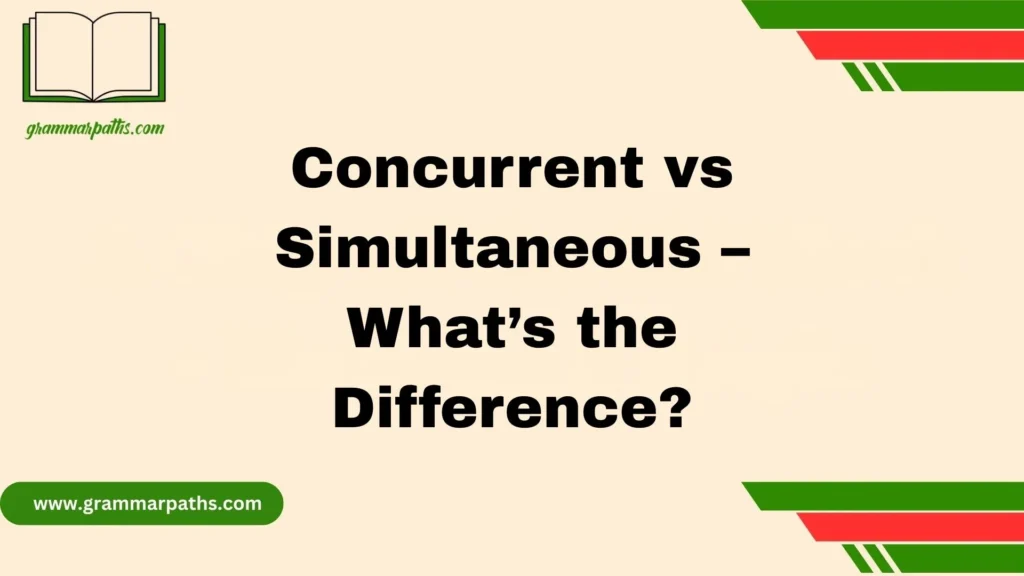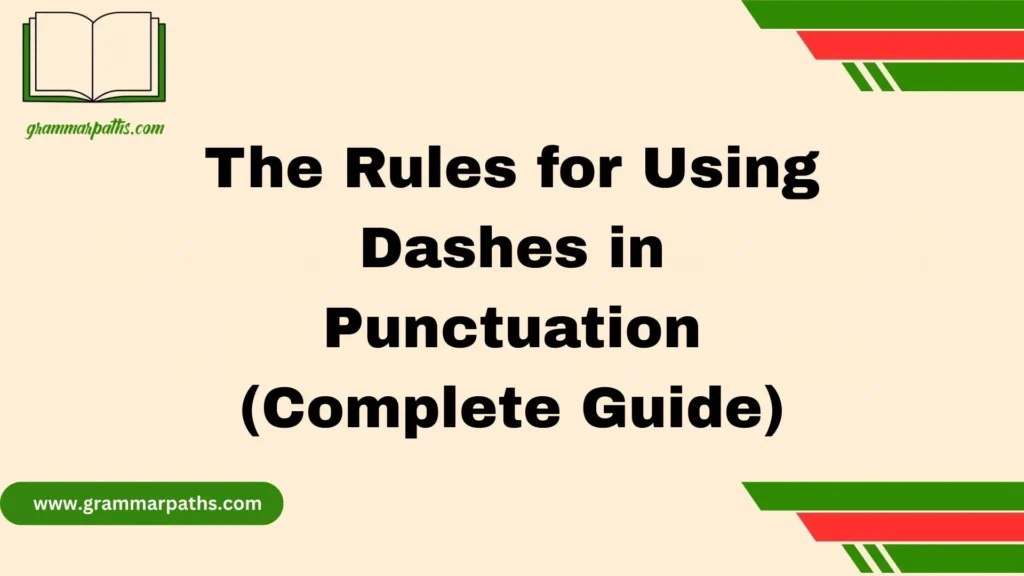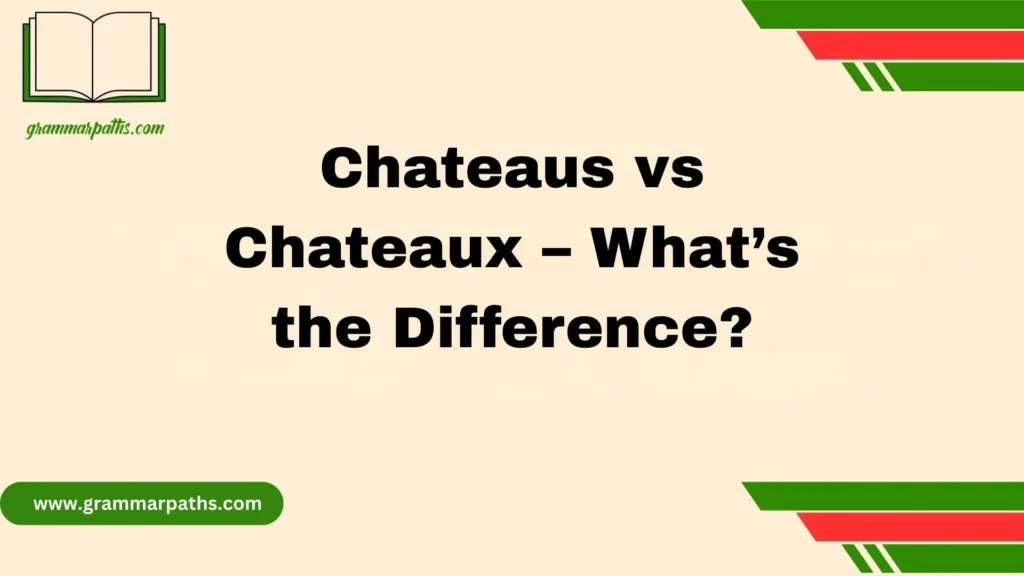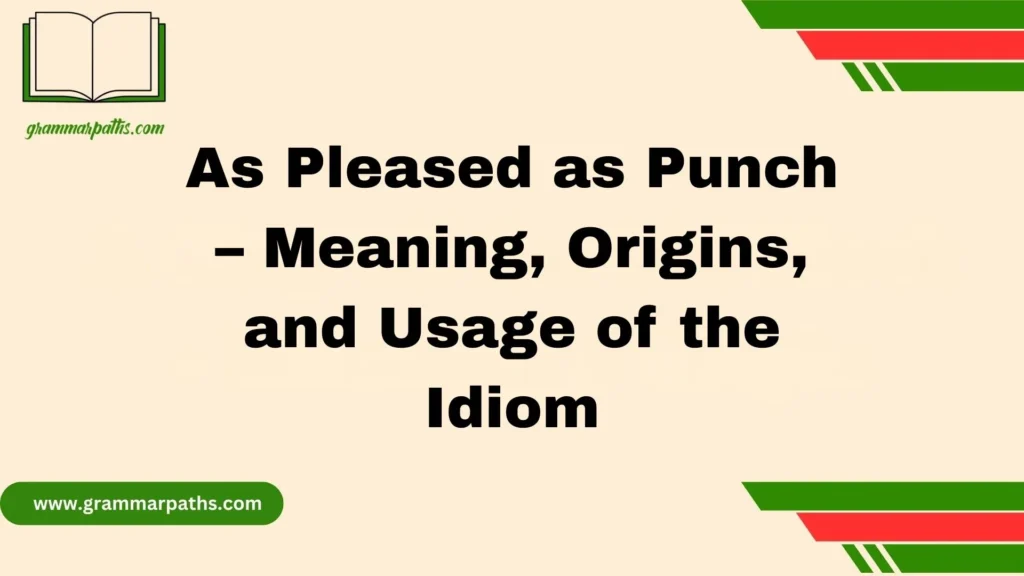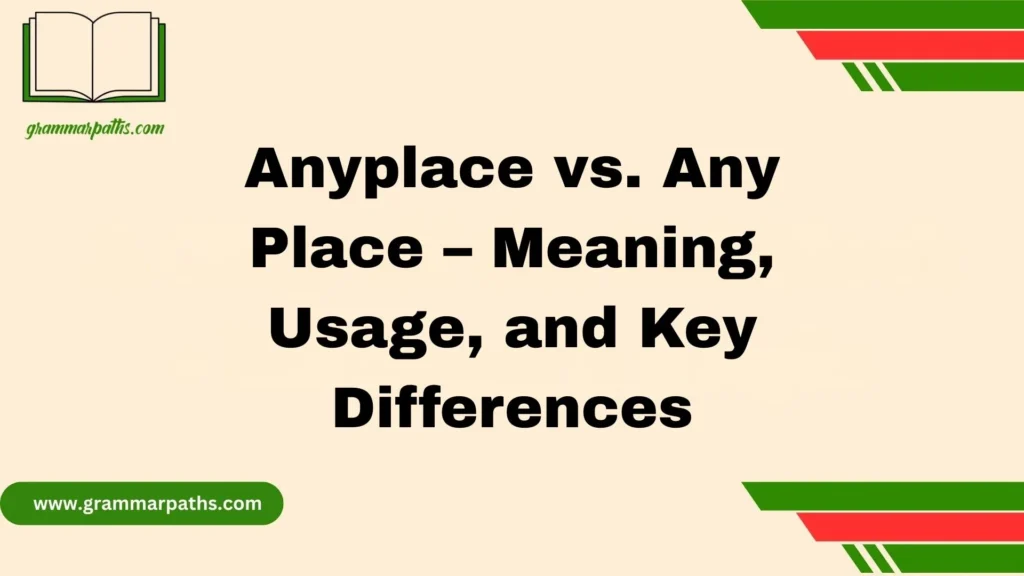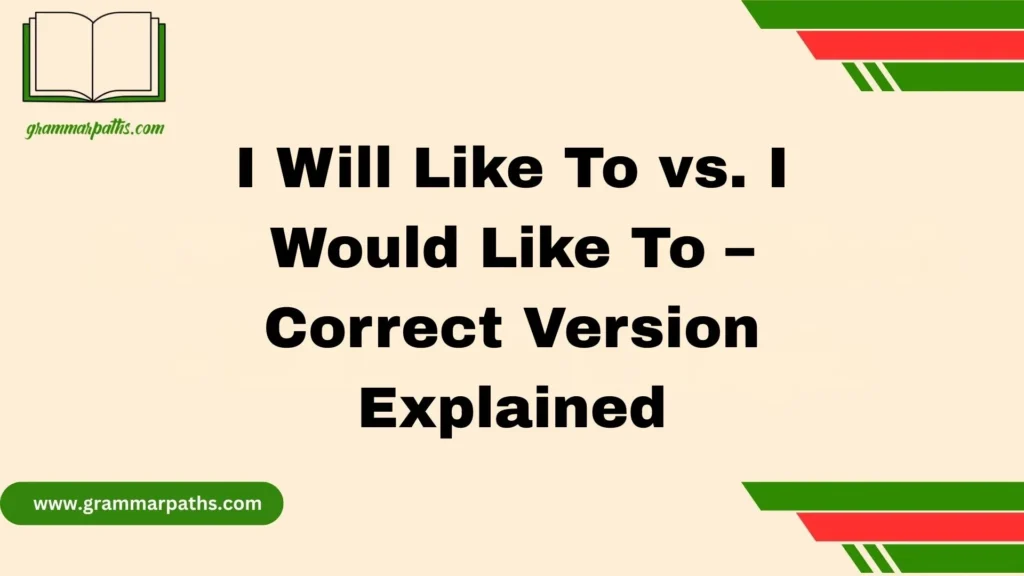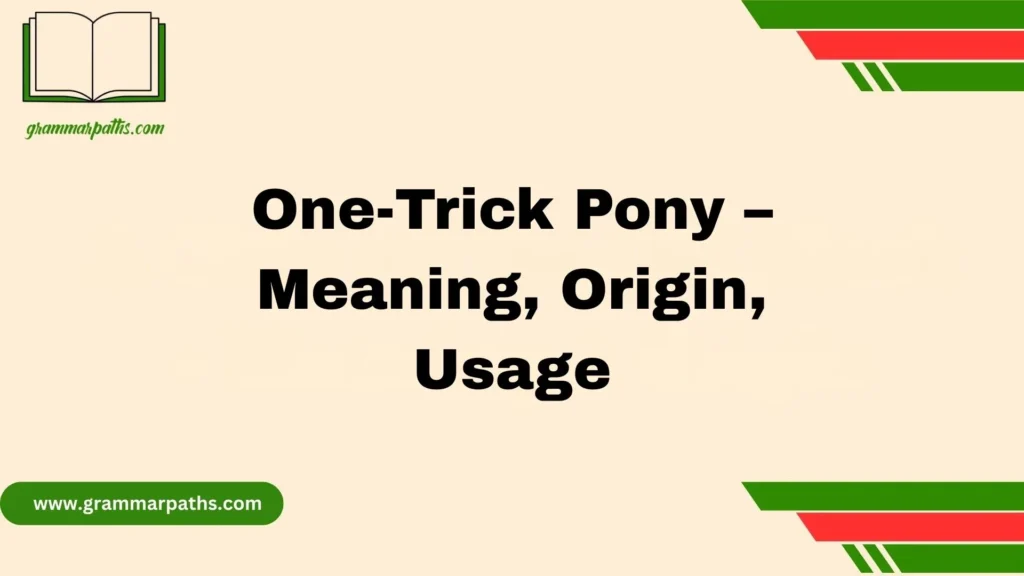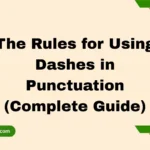When it comes to writing, punctuation marks play a crucial role in giving clarity and flow to your sentences. Among them, the dash is often misunderstood or confused with the hyphen. While both look similar, their rules of usage are very different. Knowing how to use dashes in punctuation correctly can make your writing more professional, expressive, and easier to read.
There are two main types of dashes: the en dash (–) and the em dash (—). Each has its own grammar rules and practical purposes in English writing. For instance, an en dash is commonly used to show ranges of numbers, dates, or time, while an em dash is often applied for emphasis, interruptions, or adding extra information. Writers frequently mix them up or even avoid them altogether, but learning the proper punctuation rules can instantly improve sentence structure.
This complete guide will explain everything you need to know about using dashes the right way. We’ll explore examples, grammar tips, and common mistakes so you’ll feel confident when adding dashes to your writing. By the end, you’ll master the art of using dashes with precision and style.
Types of Dashes in Punctuation
The Em Dash (—)
The em dash is the most versatile of all dashes. It’s roughly the width of the letter “M” in the font being used, which is where it gets its name. Writers rely on it to:
- Create emphasis in a sentence.
- Mark interruptions in dialogue.
- Replace commas, colons, or parentheses for variety and style.
Example:
- She had one priority—finishing her degree.
- “Wait—don’t go yet!”
The em dash adds weight, drama, and a pause that’s stronger than a comma but lighter than a period.
The En Dash (–)
The en dash is shorter than the em dash but longer than a hyphen. Its length equals the width of the letter “N.” The en dash is less dramatic but highly functional. Writers use it to:
- Indicate ranges (dates, times, numbers).
- Show connections between two elements.
- Create clarity in complex compound adjectives.
Example:
- 1990–2000 was a decade of change.
- The New York–London flight leaves at noon.
- Post–World War II politics shaped the era.
Unlike the em dash, the en dash doesn’t add drama—it delivers precision.
The Hyphen (-) vs. Dashes
The hyphen is not a dash, though it’s often confused as one. Hyphens connect words or parts of words, while dashes signal breaks, ranges, or emphasis.
Example:
- Well-known author (hyphen)
- Pages 22–30 (en dash)
- She had only one choice—leave. (em dash)
Key difference: Hyphens join; dashes separate.
Using Em Dashes Effectively
Em Dashes for Emphasis
When you want your words to hit harder, an em dash delivers. It adds drama by creating a pause that tells the reader: pay attention here.
Example:
- Success requires only one thing—consistency.
Think of it as the drumbeat before the reveal. It grabs attention without breaking flow.
Replacing Parentheses with Em Dashes
Parentheses soften information, making it feel less central. But when you use em dashes instead, you add punch.
Example:
- Parentheses: The meeting (originally scheduled for Monday) was delayed.
- Em dash: The meeting—originally scheduled for Monday—was delayed.
The em dash version feels more alive, drawing readers in rather than pushing details to the background.
Breaking Up Complex Sentences
Long sentences filled with commas can overwhelm readers. The em dash steps in to create natural breaks.
Example:
- Without dash: The project, which started in January, has grown quickly, and the results have impressed stakeholders.
- With dash: The project—which started in January—has grown quickly, and the results have impressed stakeholders.
Notice how the em dash makes the sentence easier to digest.
Em Dash vs. Colon
Both the em dash and the colon introduce something important, but their tone differs.
- Colon feels formal and direct.
- Em dash feels conversational and dramatic.
Example:
- Colon: She had three goals: graduate, travel, and start her career.
- Em dash: She had three goals—graduate, travel, and start her career.
The colon sets up a list logically; the em dash makes it feel like an aside.
Using En Dashes Correctly
Time, Date, and Number Ranges
One of the most common roles for the en dash is showing ranges.
Correct:
- 9:00 a.m.–5:00 p.m.
- Pages 101–120
- 2010–2020
Style note:
- AP Style recommends no spaces around en dashes.
- Chicago Manual of Style allows flexibility depending on context.
Indicating Relationships and Connections
The en dash also shows connections, especially in compound phrases.
Examples:
- The Boston–Chicago train was delayed.
- The Washington, D.C.–New York line runs daily.
- The Nobel Prize–winning scientist presented her research.
It’s subtle but essential for clarity. Without the en dash, the meaning can blur.
Common Writing Uses for Dashes
Writers turn to dashes when they need flexibility. Here are everyday uses that add clarity or character:
- Interruptions in dialogue
- “But I thought you said—”
- Asides
- The movie—though long—was unforgettable.
- Sudden shifts in tone
- I thought it was over—it had only just begun.
Dashes mimic the rhythms of natural speech, making writing feel alive.
Avoiding Dash Mistakes
Even skilled writers stumble with dashes. Here are pitfalls to avoid:
- Overusing dashes: Too many weaken their effect.
- Confusing dashes with hyphens: Remember, hyphens join, dashes separate.
- Ignoring style guide differences:
- AP Style: favors fewer dashes, prefers clarity.
- Chicago Style: embraces em dashes with no spaces.
- MLA: consistent with Chicago, but allows flexibility in academic writing.
Pro tip: Choose one style guide and stick with it for consistency.
Practical Tips for Writers
Dashes can feel tricky in digital writing, especially since keyboards don’t have a dedicated dash key. Here’s how to master them:
Keyboard Shortcuts
| Dash Type | Windows Shortcut | Mac Shortcut | HTML Code |
| Em Dash (—) | Alt + 0151 | Option + Shift + Hyphen | — |
| En Dash (–) | Alt + 0150 | Option + Hyphen | – |
Consistency Across Platforms
- In Word, you can set autocorrect to replace double hyphens (–) with em dashes.
- Google Docs offers similar substitutions under Preferences.
- On websites, HTML codes ensure dashes display correctly.
Rule of Thumb: If your dash use feels excessive, try reworking your sentence. Clarity always comes first.
Quick Reference Table for Dashes
| Dash Type | Length | Main Uses | Examples |
| Hyphen (-) | Shortest | Join words, split syllables | well-known, long-term |
| En Dash (–) | Medium | Ranges, connections | 1990–2000, Boston–Chicago |
| Em Dash (—) | Longest | Emphasis, interruptions, asides | She knew—without a doubt—it was true. |
This table helps spot the right dash instantly.
Conclusion
Mastering the rules for using dashes in punctuation can transform the way you write. The en dash (–) and em dash (—) serve unique purposes, from showing ranges of numbers and dates to creating emphasis and dramatic pauses. Many writers confuse them with hyphens, but once you understand their differences, your sentences become more clear, stylish, and professional.
Using dashes effectively is not just about following grammar rules; it’s about giving your writing rhythm, precision, and personality. By practicing with real examples, avoiding common mistakes, and applying these guidelines consistently, you’ll write with greater confidence. Think of dashes as tools—when used correctly, they highlight meaning and keep your readers engaged.
FAQs
Q1: What is the difference between a dash and a hyphen?
A dash (– or —) is longer than a hyphen (-) and is used for emphasis, ranges, or interruptions, while a hyphen joins words together.
Q2: When should I use an en dash?
Use an en dash (–) to indicate ranges (e.g., 1990–2000) or connections between values.
Q3: What is the purpose of an em dash?
An em dash (—) is used for emphasis, parenthetical phrases, or interruptions in sentences.
Q4: Can I use spaces around dashes?
In formal writing, em dashes usually have no spaces, while en dashes may have spaces depending on style guides.
Q5: Do all keyboards have dash symbols?
No, but you can insert dashes using keyboard shortcuts or the insert symbol function in word processors.

Emma Brooke is a passionate language expert and contributor at GrammarPaths.com, where she helps learners navigate the complexities of English grammar, idioms, and effective writing. With a strong academic background and years of teaching experience, Emma excels at turning tricky grammar rules into simple, practical lessons that readers can easily grasp.
